Pararescue, Combat Controllers Approved for New, Air Force-Only Combat Diver Badge
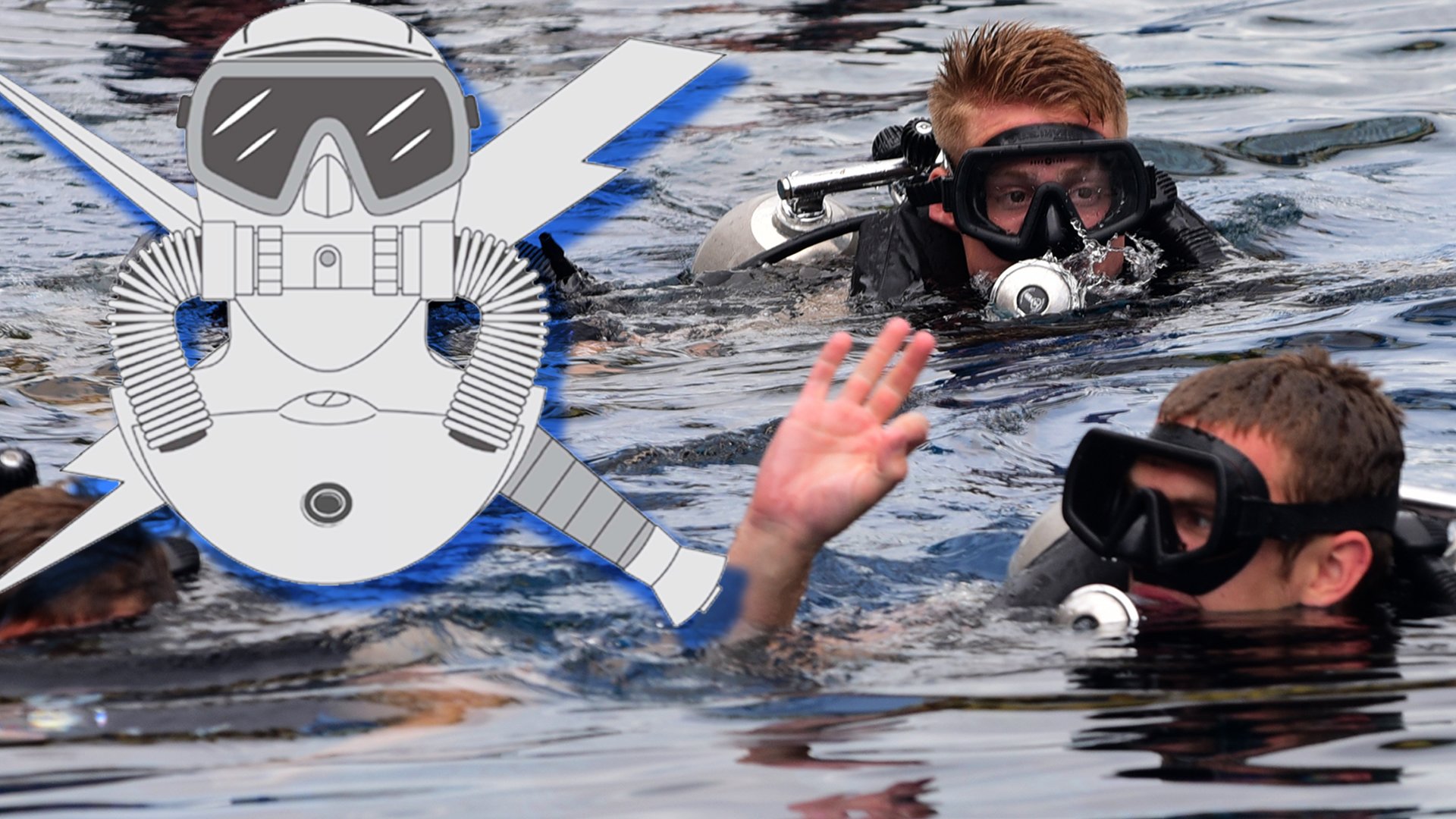
U.S. Air Force diving students begin their training at Naval Support Activity Panama City, Fla., Aug. 3, 2017. The Naval Diving and Salvage Training Center is the home of research, development, testing and evaluation on diving matters. Certification and training is conducted constantly to support the nation's military diving requirements. (U.S. Air Force photo by Senior Airman Cody R. Miller/Released)
The good news is that the elite troops occasionally referred to as "Air Commandos" now have their own badge for operating underwater.
The bad news: It doesn’t have sharks on it.
Air Force special operators who have graduated from a combat dive course — broadly known as "scuba school" in the small communities eligible for the training — will now get an exclusive badge to show for it. Air Force Chief of Staff Gen. Charles Q. Brown Jr. recently approved the new Air Force combat dive badge, replacing Navy and Army badges that Air Force troops have traditionally worn.
The new badge is similar to the combat dive badge awarded by the Army, which some Air Force operators have worn since 2004, with one major difference.
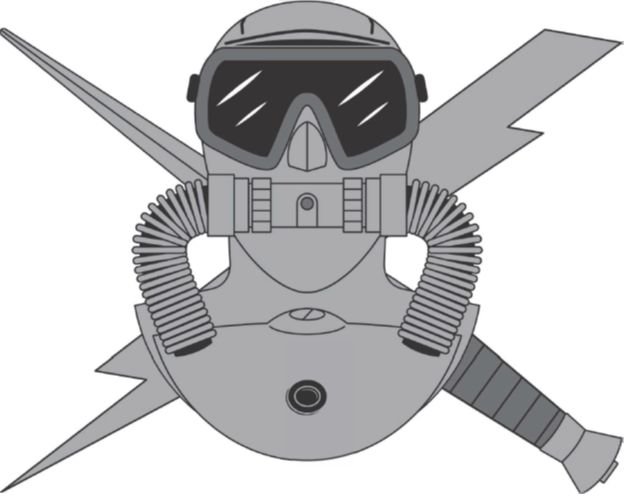
Both badges depict a goggle- and mouthpiece-wearing figure with daggers behind him, though the Air Force replaces one dagger with a lightning bolt.
But while the Army badge has two sharks, the new Air Force version is wholly sharkless.
The lack of sharks did not appear to bother Maj. Gen. Charles Corcoran, the Air Force's deputy chief of staff for operations, according to an Air Force news release.
“Air Force combat divers are essential to both combat and austere rescue situations,” Corcoran said in the release. “Having our own service-specific qualification badge accurately represents our unique capability to augment missions with any sister service component, and most importantly, highlights our member’s heroic actions to conduct rescue and retrieval operations to ensure no one gets left behind.”
The change will affect few airmen. The Air Force sends only combat controllers and pararescuemen, or PJs, through its combat dive school as part of their initial training, and some Tactical Air Control Party specialists and Special Reconnaissance troops attend the eight-week course later in their careers.
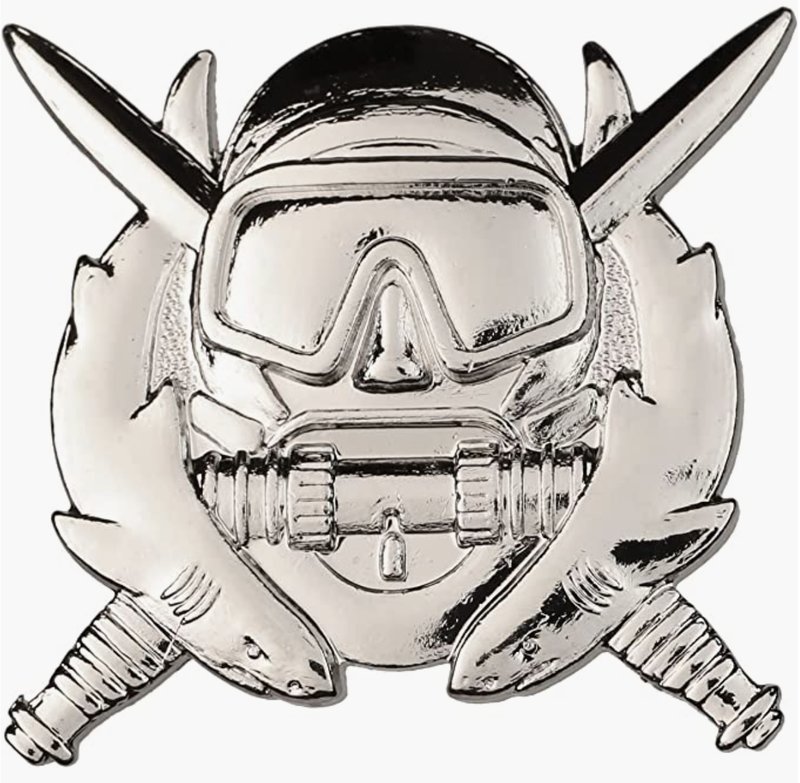
The Army-issued Combat Diver badge, adorned with sharks and worn by Air Force special operators who graduated from the Army's Combat Diver Qualifcation Course in Key West, Florida. Army photo.
As early as the 1960s, most Air Force combat controllers and PJs attended the Army’s Key West school as part of their initial training pipeline. The Air Force opened its own course in Panama City in 2006.
Prior to the new badge announcement, Air Force troops who graduated from the Key West course have been authorized to wear the Army badge — ya know, the shark one — while those who graduated from the Air Force course have worn a so-called scuba bubble, a simpler, round depiction of a diver which is also worn by entry-level Navy divers.
Air Force operators will switch to the new badge regardless of which combat dive course they attended.
“Navy scuba divers are trained for submarine and salvage diving,” said Senior Master Sgt. Christopher Uriarte, Air Force Command Dive Program manager and diver. “In contrast, US Air Force combat divers are trained in the fundamentals of underwater tactical diving for insertion, extraction, and maritime rescue and recovery operations.”
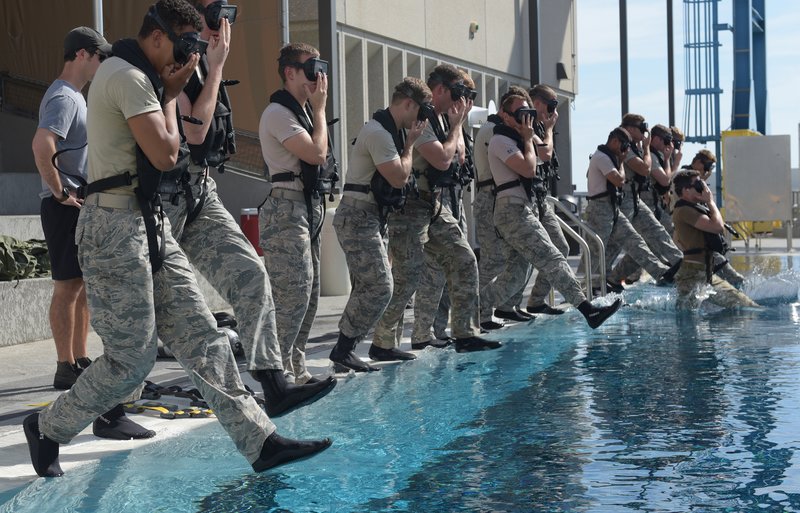
Air Force diving students take the plunge for their first dive of the day at Naval Support Activity Panama City, Fla., Aug. 2, 2017. Air Force photo by Senior Airman Cody R. Miller.
Across every branch of the military, combat dive is one of the rarest qualifications, even among highly trained special ops troops.
Those on combat dive teams are trained to infiltrate maritime targets like beaches and harbors or to attack ships by approaching underwater with long-distance underwater swims, usually pulling a mission’s worth of equipment behind them on a tagline.
As a result, combat dive courses are renowned for their intense physical and mental demands. Perhaps most feared by students in combat dive curricula is the week or more of pool training that begins most courses. Under relentless harassment from instructors, students move from long swims and extended breath-holding exercises to high-stress drills with scuba equipment.
After the pool comes the ocean, where students swim and navigate for hours underwater, day and night, surfacing only when they reach a target beach. Those who lose their way and land in the wrong spot face being dropped from the course.
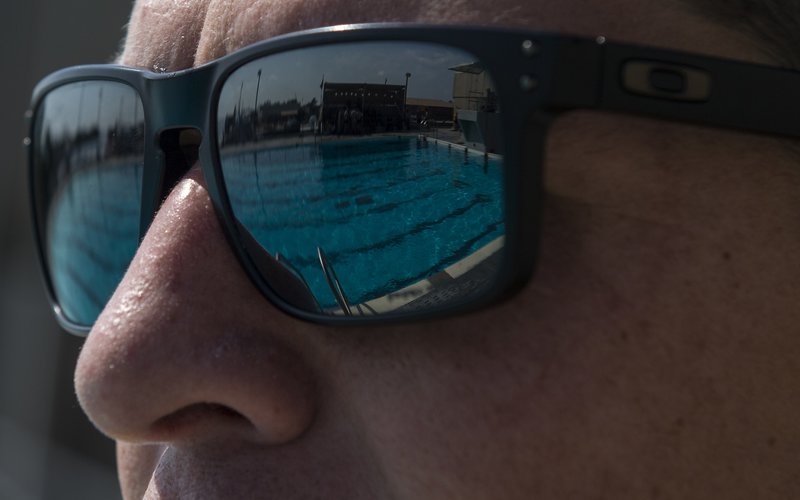
An Air Force Combat Dive Course instructor looks across the pool at Naval Support Activity Panama City, Florida, Aug. 12, 2019. Air Force photo by Senior Airman Kevin Tanenbaum.
The courses also include academics on dive medicine, dive planning, and equipment prep and maintenance.
While combat dive schools are generally standardized across all services, the badges that come with them have long varied across services.
Navy SEALs learn and practice combat dive skills in Basic Underwater Demolition/SEALs, or BUD/S, earning the SEAL Trident when they graduate. The Army sends some hand-picked Green Berets, Rangers, and candidates from a few other specialties to the Special Forces-run course in Key West, earning the shark-covered badge, although Key West grads wore the Navy “bubble” until 2004.
The Marine Corps trains Reconnaissance Marines and Marine Raiders at its own combat dive school Panama City, after which Raiders wear their own distinctive Marine Special Operator Insignia, while Recon Marines wear the Navy dive badge.
Read Next: Beards in Blue? Air Force Uniform Board Will Consider New Facial Hair Rules in November
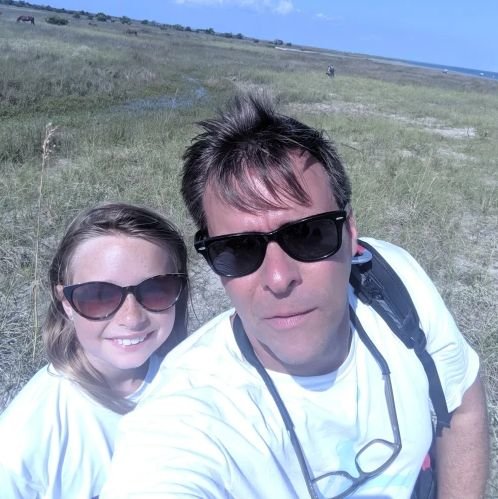
Matt White is a former senior editor for Coffee or Die Magazine. He was a pararescueman in the Air Force and the Alaska Air National Guard for eight years and has more than a decade of experience in daily and magazine journalism.
BRCC and Bad Moon Print Press team up for an exclusive, limited-edition T-shirt design!
BRCC partners with Team Room Design for an exclusive T-shirt release!
Thirty Seconds Out has partnered with BRCC for an exclusive shirt design invoking the God of Winter.
Lucas O'Hara of Grizzly Forge has teamed up with BRCC for a badass, exclusive Shirt Club T-shirt design featuring his most popular knife and tiomahawk.
Coffee or Die sits down with one of the graphic designers behind Black Rifle Coffee's signature look and vibe.
Biden will award the Medal of Honor to a Vietnam War Army helicopter pilot who risked his life to save a reconnaissance team from almost certain death.
Ever wonder how much Jack Mandaville would f*ck sh*t up if he went back in time? The American Revolution didn't even see him coming.
A nearly 200-year-old West Point time capsule that at first appeared to yield little more than dust contains hidden treasure, the US Military Academy said.












